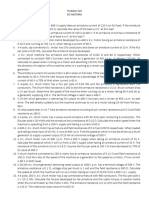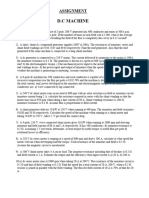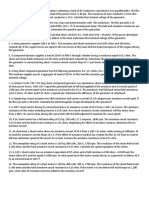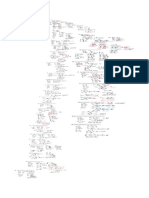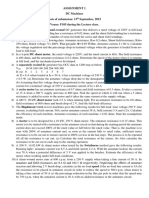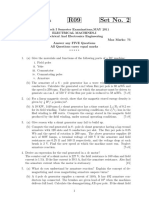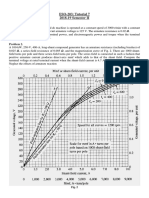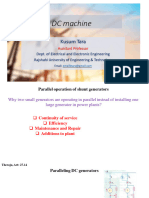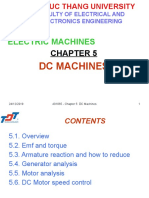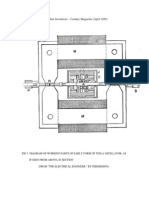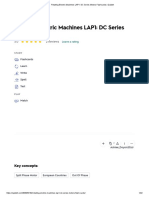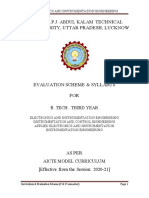0% found this document useful (0 votes)
17 views8 pagesTutorial Problems 29
The document contains a series of tutorial problems related to the calculations of torque, speed, and performance of various types of d.c. motors and generators under different conditions. Each problem provides specific parameters such as voltage, current, resistance, and speed, requiring the application of electrical engineering principles to solve. The problems are designed for students to practice and enhance their understanding of d.c. machine operation.
Uploaded by
romematela1002Copyright
© © All Rights Reserved
We take content rights seriously. If you suspect this is your content, claim it here.
Available Formats
Download as PDF, TXT or read online on Scribd
0% found this document useful (0 votes)
17 views8 pagesTutorial Problems 29
The document contains a series of tutorial problems related to the calculations of torque, speed, and performance of various types of d.c. motors and generators under different conditions. Each problem provides specific parameters such as voltage, current, resistance, and speed, requiring the application of electrical engineering principles to solve. The problems are designed for students to practice and enhance their understanding of d.c. machine operation.
Uploaded by
romematela1002Copyright
© © All Rights Reserved
We take content rights seriously. If you suspect this is your content, claim it here.
Available Formats
Download as PDF, TXT or read online on Scribd
/ 8

